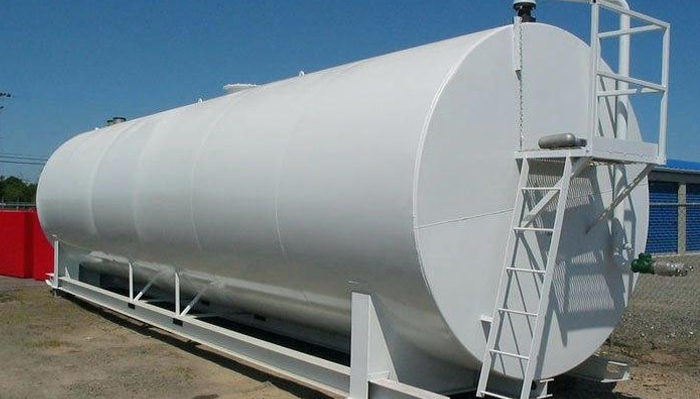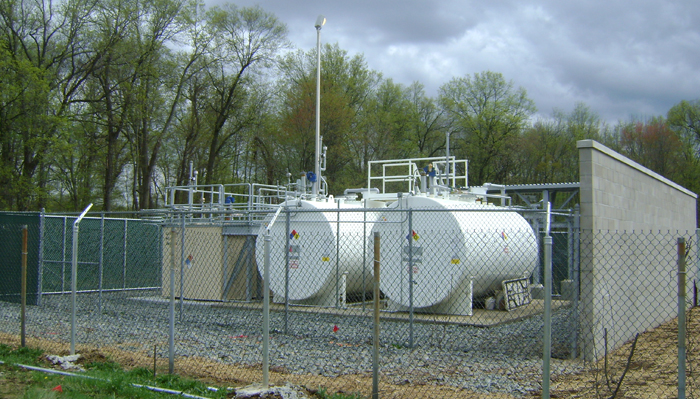Product Category
The main classification of oil tanks
Date: Dec 10, 2019

Common metal oil tank shapes are generally vertical cylindrical, horizontal cylindrical, and spherical. Vertical cylindrical oil tanks can be further divided into truss top tanks, momentless top tanks, beam-column top tanks, vaulted tanks, sleeve top tanks and floating roof tanks, etc. Cans and floating roof cans. The vaulted tank structure is relatively simple and is often used to store raw oil, refined oil and aromatic products. Floating roof tanks are divided into inner floating roof tanks and outer floating roof tanks. The steel floating roof in the tank floats on the oil surface and rises and falls with the oil surface. The floating roof not only reduces oil consumption, but also reduces the risk of fire and pollution of the atmosphere. In particular, the inner floating roof tank has less evaporation loss, which can reduce the oxidation of oil by air and ensure the quality of stored oil, which is more beneficial to fire protection. The front inner floating roof tank is widely used at home and abroad to store volatile light oil products, and it is a popular oil storage tank.
Horizontal cylindrical oil tanks are also widely used. Because it has the ability to withstand high positive and negative pressures, it is conducive to reducing the evaporation loss of oil products and reducing the risk of fire. It can be manufactured in batches on machinery and then shipped to the construction site for easy handling and demolition, and has good mobility. The disadvantage is that the capacity is generally small, the number of uses is large, and the area is large. It is suitable for small distribution oil depots, rural oil depots, urban gas stations, military field oil depots or enterprise-affiliated oil depots.
Spherical oil tanks have the characteristics of pressure resistance and material saving. They are mostly used in petroleum liquefied gas systems and also used as high pressure solvent storage tanks. The underground oil tank refers to an oil tank whose maximum oil level in the tank is lower than the lowest elevation of the adjacent area by 0.2m, and the thickness of the soil on the tank top is not less than 0.5m. This type of oil tank has low loss and low risk of fire.
The underground oil tank refers to an oil tank whose maximum oil level in the tank is lower than the lowest elevation of the adjacent area by 0.2m, and the thickness of the soil on the tank top is not less than 0.5m. This type of oil tank has low loss and low risk of fire.
The semi-underground oil tank refers to the oil tank whose buried depth exceeds half of the tank height, and the highest oil level in the tank is not higher than the lowest elevation of the adjacent area by 2m.
Above-ground tanks refer to tanks whose tank base is higher than or equal to the lowest elevation of the adjacent area, or tanks where the tank is buried less than half its height. Above-ground oil tanks are a common type of oil tanks in oil refining enterprises. They are easy to construct, easy to manage and maintain, but have large evaporation losses and a high risk of fire.
Horizontal cylindrical oil tanks are also widely used. Because it has the ability to withstand high positive and negative pressures, it is conducive to reducing the evaporation loss of oil products and reducing the risk of fire. It can be manufactured in batches on machinery and then shipped to the construction site for easy handling and demolition, and has good mobility. The disadvantage is that the capacity is generally small, the number of uses is large, and the area is large. It is suitable for small distribution oil depots, rural oil depots, urban gas stations, military field oil depots or enterprise-affiliated oil depots.
Spherical oil tanks have the characteristics of pressure resistance and material saving. They are mostly used in petroleum liquefied gas systems and also used as high pressure solvent storage tanks.

The semi-underground oil tank refers to the oil tank whose buried depth exceeds half of the tank height, and the highest oil level in the tank is not higher than the lowest elevation of the adjacent area by 2m.
Above-ground tanks refer to tanks whose tank base is higher than or equal to the lowest elevation of the adjacent area, or tanks where the tank is buried less than half its height. Above-ground oil tanks are a common type of oil tanks in oil refining enterprises. They are easy to construct, easy to manage and maintain, but have large evaporation losses and a high risk of fire.
Send Your Inquiry
We not only provide a good product, but also provide high quality service. If you are interested in our products,
you can contact us in the following ways.
you can contact us in the following ways.















































































































